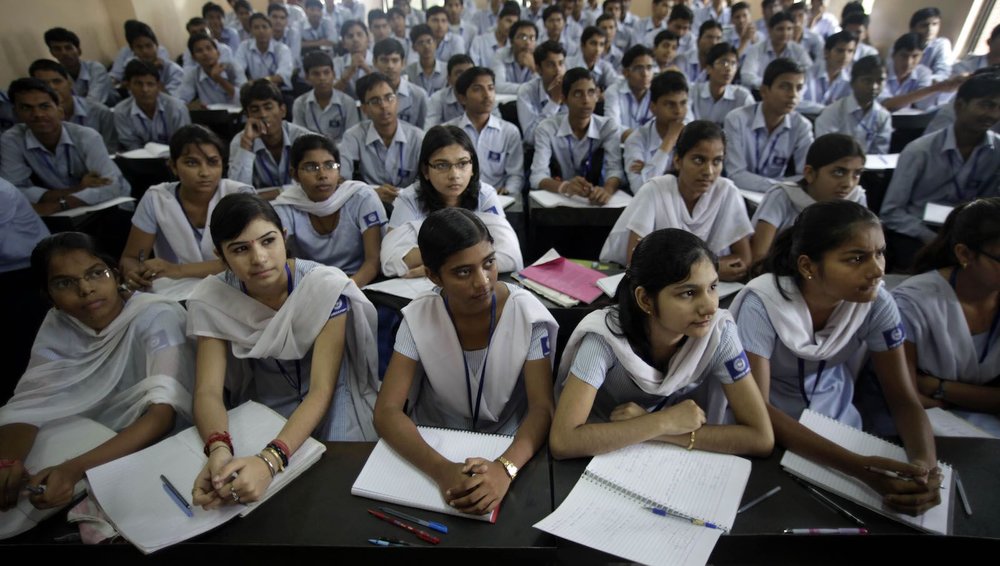Money For Nothing? Private Education in India
Are parents justified in spending on low-cost private schools?
Chinmaya U Holla
One of the hardest problems in education is figuring out if a teacher is doing a good job or not. This lies at the center of debates on how best to help teachers excel at their job. Teachers perform an extremely complex job which doesn’t yield outcomes right away. Think of it this way — a software engineer has to complete a certain set of tasks within a given period of time and is evaluated against that benchmark. A good teacher’s job, on the other hand, is very hard to define as no two people agree on the definition of a good education. Do we identify a good teacher by the children’s test scores or their performance in non-academic activities or how empathetic/kind they are or all of these?
Since Indian children perform poorly on almost all of those metrics (perhaps they are very kind, we don’t really know), for simplicity’s sake, let’s focus on academic skills. How can we structure a teacher’s incentives such that she is not penalized for outcomes that are beyond her control while also ensuring that the effort that she puts in is accurately observed? For example, we don’t want to punish a teacher who is teaching a class which has a large percentage of children with learning disabilities, especially when the teacher has little to no additional support.
In India, governance in public schools is weak. There is mounting evidence that children aren’t learning and that a significant portion of teachers don’t perform their duties. We’re in a bad equilibrium wherein there is no cost to the significant number of teachers for not showing up and there is no reward to the large number of teachers who do a fantastic job despite a sapping culture.
Is it desirable to advocate for a performance-based pay and if yes, how do we go about doing it? There are some lessons that Indian administrators can learn from the recent Nobel prize winners in this regard. (For a quick primer on the work itself, which deals with structuring performance pay, read thisand here’s another take on how this work applies to schools). To put it simply, having a badly designed incentive structure is no better than having no incentives at all.
Consider this scenario: The Maharashtra education ministry recently passed a government resolution indicating that it wishes to conduct annual assessments across public schools to track learning outcomes. Learning assessments by themselves are worthless unless used to inform certain actions. How should Maharashtra officials use this information to build an incentive structure? To do this, policymakers should focus on aligning observable teacher actions and “true performance” of students, while controlling for all the observable factors that affect a child’s performance but are beyond the control of the teacher. What does this mean? The first step is to design tests such that performance on the test is linked to an enduring skill and not shaped by “teaching to the test”. The second step is to identify the behaviors of teachers who are doing the most to improve the performance of their children. The last step is to reward such behaviors — these may not yield results all the time but it demonstrates desirable effort on the teachers’ part and should be encouraged.
Big data is an important ally to policymakers in this context. Beyond being used a buzzword in almost every context these days, big data has practical applications for assessing teacher performance. Some of these models have been in use in the US for a while now and are being perfected all the time. Indian policymakers should, however, take care not to blindly trust the datathat these models might spit out. Given the paucity of data in the Indian school system, I wouldn’t worry about that at this moment in time.
Given the political economy of public schools in India, it is unlikely that the “stick” end of the incentive structure can be employed. But the question we need to explore further is if tests designed in India provide an accurate picture of improvements (or lack thereof) in a child’s ability. Simultaneously, policymakers should build a data infrastructure that collects information on characteristics of the child’s school, home and community that are known to exert influence on his/her performance and control for them while assessing a teacher’s performance. I can’t emphasize this enough — in the absence of this, the narrative will be to blame the teacher for all the failures of the child while the truth is that there are several factors beyond their control. The good news is, if we put together NSSO data, DISE data and census data, we should be able to speak to many of these factors.
All this sounds good on paper but given that Indian schools are stuck in a low-level equilibrium wherein neither test scores nor enduring skills are being improved, how do we get out of this rut? I don’t have an answer to that but it’s something academics and practitioners should think about. I propose that looking at school systems through Akerlof’s identity economics lens is a useful exercise. Each school is a “firm” by itself — therefore, it makes eminent sense to carefully devolve hiring to the school-level. The pre-requisite for this, however, is to ensure that a competent school leader is in place. The bottomline is that economics has important lessons for how we design our school systems and hopefully our policymakers integrate that into the policy agenda.
The author is a consultant at The World Bank, a student at Georgetown University’s McCourt School of Public Policy, and a former Teach for India Fellow.
